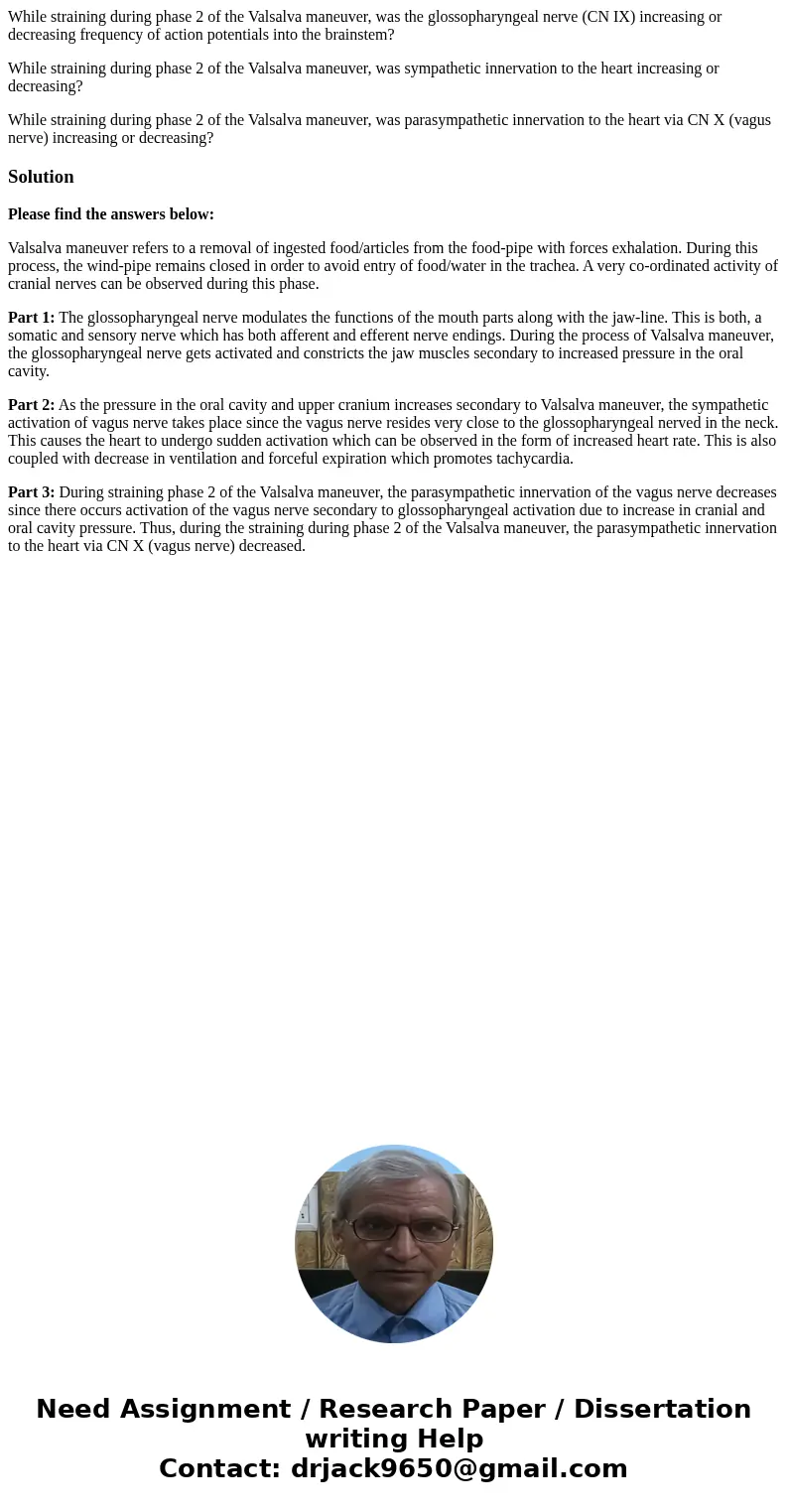While straining during phase 2 of the Valsalva maneuver was
While straining during phase 2 of the Valsalva maneuver, was the glossopharyngeal nerve (CN IX) increasing or decreasing frequency of action potentials into the brainstem?
While straining during phase 2 of the Valsalva maneuver, was sympathetic innervation to the heart increasing or decreasing?
While straining during phase 2 of the Valsalva maneuver, was parasympathetic innervation to the heart via CN X (vagus nerve) increasing or decreasing?
Solution
Please find the answers below:
Valsalva maneuver refers to a removal of ingested food/articles from the food-pipe with forces exhalation. During this process, the wind-pipe remains closed in order to avoid entry of food/water in the trachea. A very co-ordinated activity of cranial nerves can be observed during this phase.
Part 1: The glossopharyngeal nerve modulates the functions of the mouth parts along with the jaw-line. This is both, a somatic and sensory nerve which has both afferent and efferent nerve endings. During the process of Valsalva maneuver, the glossopharyngeal nerve gets activated and constricts the jaw muscles secondary to increased pressure in the oral cavity.
Part 2: As the pressure in the oral cavity and upper cranium increases secondary to Valsalva maneuver, the sympathetic activation of vagus nerve takes place since the vagus nerve resides very close to the glossopharyngeal nerved in the neck. This causes the heart to undergo sudden activation which can be observed in the form of increased heart rate. This is also coupled with decrease in ventilation and forceful expiration which promotes tachycardia.
Part 3: During straining phase 2 of the Valsalva maneuver, the parasympathetic innervation of the vagus nerve decreases since there occurs activation of the vagus nerve secondary to glossopharyngeal activation due to increase in cranial and oral cavity pressure. Thus, during the straining during phase 2 of the Valsalva maneuver, the parasympathetic innervation to the heart via CN X (vagus nerve) decreased.

 Homework Sourse
Homework Sourse